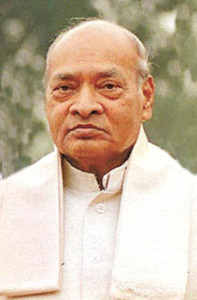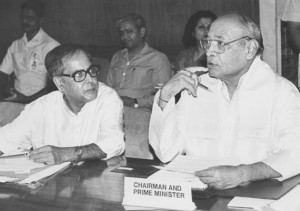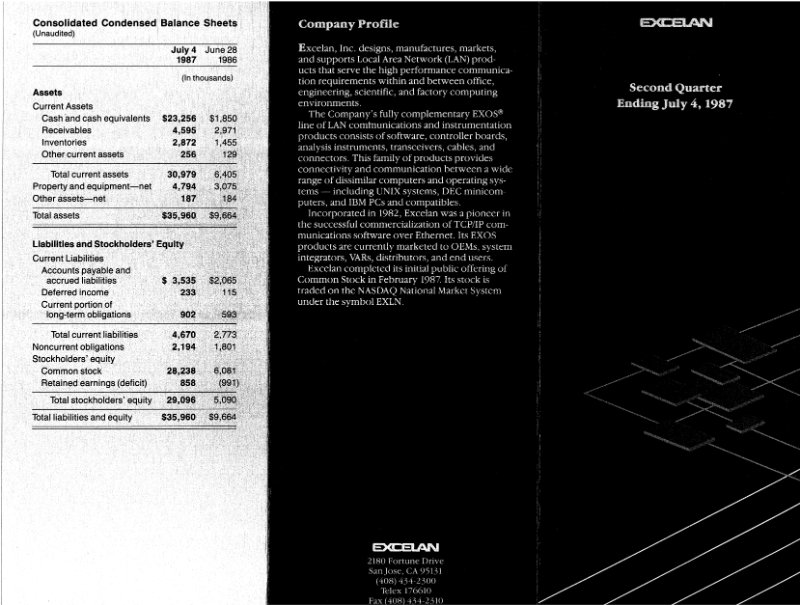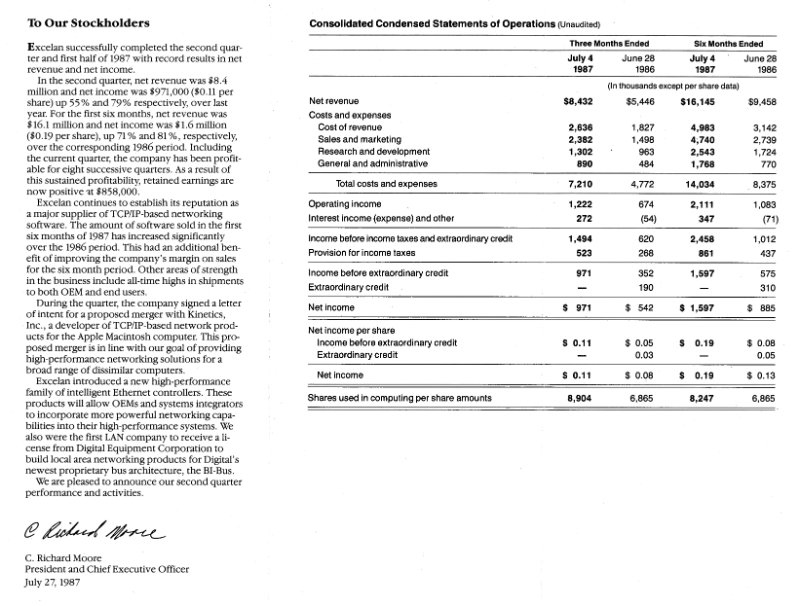This is the second Quarterly earning report for Excelan after it had gone public. Back then, companies printed and mailed quarterly reports to all share holders.
1980 was the year of reckoning for me. I turned 35 that year and had been at the same job for 9 years. I had done well, in fact too well, as I had reached the top rung of the technical ladder. I had two patents to my name. Even though I was at the top of my game, I felt scared as I was starting to feel stagnant. Besides, my job with the defense contractor Singer-Link was seen as an ultimate sin in Silicon Valley.


“Narasimha Rao ka yehi Vaada, Baten kum, Kaam Jyaada”. This roughly translates to: Narasimha rao promises to talk less and do more. It was on a billboard that I spotted during one of my visits to India in 1993.
Narasimha Rao served as a Prime Minister of India from 1991 to 1996. No sooner he became the Prime Minister he inducted Manmohan Singh, a lifelong bureaucrat, as his finance minister.
Manmohan Singh in his first budget speech in 1991 announced a new economic policy that heralded a new direction for India. He essentially set the Industrial sector free to pursue its own priorities without having to get a license from the government. It was an almost complete renunciation of the policies pursued by various Congress party governments till then. Narasimha Rao was a quintessential congressman who had served under both Indira Gandhi and Rajiv Gandhi. So this change in direction was totally unexpected. There were no further changes during rest of his term. After some initial turbulence and resistance, mostly from industrialist who had enjoyed protected markets, Indian economy started to show some life and growth rate steadily picked up to unprecedented levels.
Narasimha was vilified by the party but he stood his ground. The party took the credit for the growth but never acknowledged Rao’s contribution. Manmohan Singh was cheered as the hero of the policy change.
With this one act Narasimha Rao freed up the animal spirits of Indians and India has seen almost 25 years of growth. Per capita income has grown almost 8 fold. India is now world’s fastest growing economy.
For this I rate Narasimha Rao 9 on the scale of 1 to 10.
1995 was the year of the Internet – the start of the Internet as we know it now. By the end of 1994, Mosaic (later to be renamed as NetScape) browser was available and DNS service had simplified the URLs. Until then it was mostly used by companies and universities to do email and file transfers. It was a crude but very useful tool – although not ready for prime time. Most people used Internet at the office or dialed office to get on the Internet from home. Incidentally modems of that vintage were lightning fast: 9600 baud (roughly bit per seconds). I had started with modems at 300 bauds way back when. Most of the eighties they were 1200 baud. Most communication was textual. 9600 bauds meant that 800 characters transferred per second. Today’s home connections are easily 1000X. My home connection now downloads at 50 MBS (million bits per second)!



